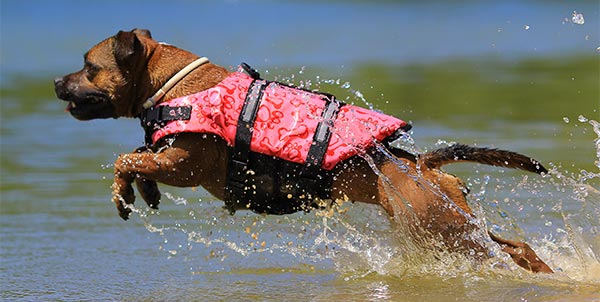Dogs at the beach: how to untangle real or supposed ordinances, rules and bans to enjoy the sea with your dog.
For four-legged families, going to the beach with dogs is sometimes a challenge as not everyone accepts them on the beach and often the entry and stationing of four-legged animals on beaches is arbitrarily opposed.
If you don’t want to give up a day at the beach with your beloved four-legged friend, then it’s a good idea to know what the law says about the presence of dogs on the beach so you can respond in kind to obstructionists and assert your rights and those of your dog.
Where and how is beach access allowed for dogs?
In the meantime, let’s make a distinction between free beaches or eminent domain and bathing establishments.
Unfortunately, there is no nationwide law regulating animal access to the maritime domain, and this legislative vacuum gives rise to misunderstandings.
It is the City Councils or Harbor Master’s Offices that autonomously regulate the areas and methods by which dogs are allowed on the beach.
Where dogs are banned, a sign is to be posted informing about this ban.
The sign MUST be clearly displayed and advertised.
In addition, it must specify and report a range of information:
- The hourly extension of the ban
- The signature of the mayor or the commander of the traffic police.
- The reference to the ordinance (the ordinance itself must be published on the praetorian registers of individual municipalities)
In the absence of these indications, the ban may be considered invalid.
So before you venture out, find out beforehand if there are any regional or municipal ordinances that prohibit dogs from entering the stretch of beach where you have decided to be stationed.
And again: no other private citizen, but ONLY law enforcement agencies can invite you to leave on the condition that they have informed you of the existence of the prohibition order, its reference number and its expiration.
Demand to read the contents of the ordinance: it is your right
In the event of refusal or denial, make a note of the law enforcement exponent’s personnel number and write to the Public Prosecutor’s Office, copying the relevant agency (municipality, harbormaster’s office, Carabinieri Command).
The Public Official in question is criminally liable for the crime of OMISSION OF OFFICIAL ACTS under Article 328 of the Criminal Code.
If in addition to the invitation to “move away” from the beach, you have also been issued an administrative penalty, you can challenge it and appeal to the Justice of the Peace.
A single noncompliance in its drafting is enough to make it null and void: the lack of a no-dogs-on-the-beach sign or the lack of indication of the number and date of the ordinance.
For dogs on the beach, the precautions that govern access in public places apply: leash and muzzle in tow, and droppings bags to accompany them.
Bathing establishments and concession beaches
It is different for beaches given under concession, that is, those on which bathing establishments are located.
Such areas are off limits to dogs if there is a specific request from the manager.
In fact, the beach manager has the authority to make the stretch of shoreline obtained under concession inaccessible to dogs except for rescue dogs and guide dogs for the blind.
The dog-friendly beach: the Bau Beach
This explains the existence of “dog beaches” the so-called Bau Beaches.
These are specially equipped establishments where dogs are allowed on the beach.
However small their numbers are across the country, the trend is for a steady growth of dog-friendly beaches.
This is due to the gradual increase in requests from vacationers to be able to take their dogs with them.
A prerequisite condition for allowing dogs on the beach is that they be regularly vaccinated.
The health booklet must be shown at the entrance and must contain all microchip and vaccine information: DON’T FORGET IT!
And don’t forget the harness, leash and muzzle either: these and more should never be missing from your dog’s beach bag,
Your four-legged friend’s beach bag
Here is a list of what it must contain:
- Specific sunscreen for dogs to be applied to hairless areas: nose, mouth, abdomen, tip of ears and base of tail
- Moisturizing ointment for plantar pads to moisturize and protect them from scorching sand
- Wipes to remove sand grains from muzzle and ears
- Spray to refresh the dog when not soaking in water or during nap time
- Sun shade tent to set up a sheltered, shady corner for the dog
- Bowl and fresh (never frozen) water always available: dog should never drink salt water
- Droppings bags
The first aid kit
Disinfectant, hydrogen peroxide, band-aid, tweezers, blunt-tipped scissors, sterile gauze, elastic bandage and saline should never be missing.
We also recommend that you use a life jacket.
Less experienced dogs will not take risks during water raids, and for swimming veterans, however, it will be a valuable ally by helping them with buoyancy and making them less tired.
In this regard, do not assume that your dog loves to swim.
If he hesitates to enter the sea, don’t force him: give him time to familiarize himself with the water.
Then rinse the dog with fresh water, never ice, to remove sand and salt.
Also, use a soothing and moisturizing shampoo at home: salt spray, or the salt elements in seawater, can cause dermatitis and dry hair.
Always ask your trusted veterinarian-he will be able to recommend specific products for your dog to take on the road.
In this regard, we would like to remind you that the doctors on the staff of Clinica la Veterinaria are always available to you for examinations and consultations.
Veterinary Clinic is always open h24 every day including holidays and with First Aid service from 8 pm to 8 am.











